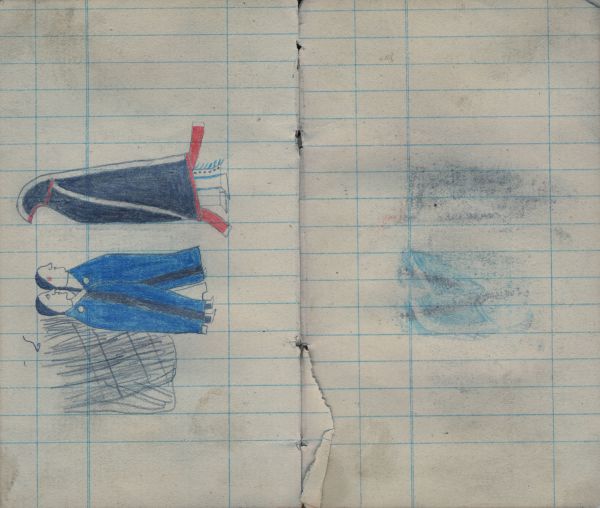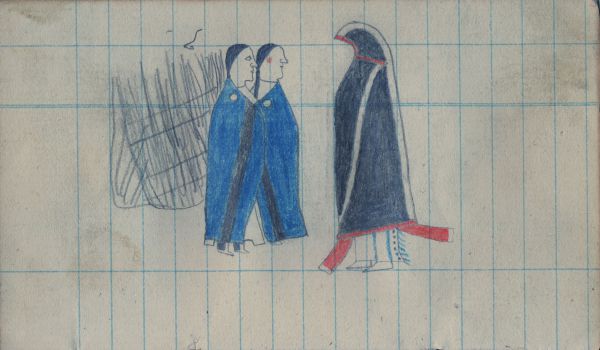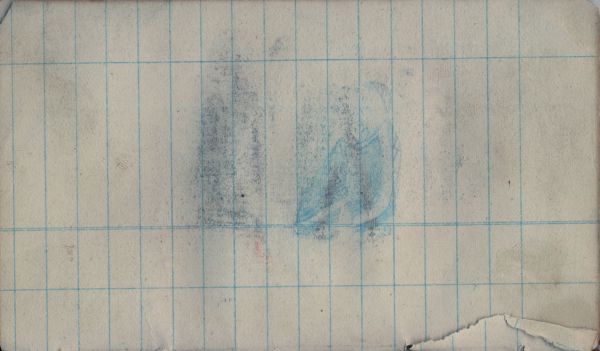2 women in blue blanket in front of rush fence face hooded man | BLANK (rubbing from facing page & evidence of missing page)
Ethnographic Notes
Sisters, wrapped in identical blankets, each accented with round, silver conchos, have stopped to talk with our hero. He is wrapped in the same dark blue (shown as black) "double wide" courting blanket seen on Pages 8 & 10, with the upper and lower edges bound in red cloth or ribbon. Especially with young girls, traveling around in pairs or groups was a common solution to the problem of an unwanted, adult chaperone. As long as there was a witness, to swear that nothing untoward had occurred, then a girl's reputation was secure. For photographs of this period showing attractive, young Cheyenne women like those portrayed by this artist, see Figures 13, 14 & 19.
The structure behind the girls is a screen of plaited willow withes---essentially a storage shed, set up adjacent to a tipi. Cheyenne camps had hundreds of dogs running loose. If not closely watched, some of these hungry pets would be likely to run off with any dried meat, or chew up any rawhide object---a saddle, lasso, etc. Willow screens secured with ropes allowed rawhide possessions to be stored safely outside the lodge in dry weather. An abandoned profile above the screen shows that the artist altered his composition.


